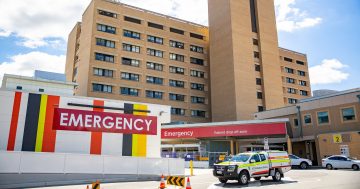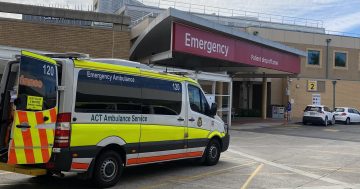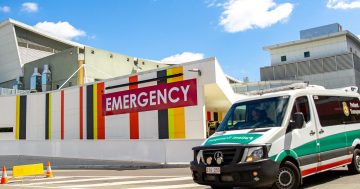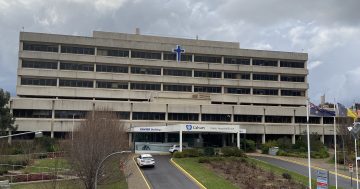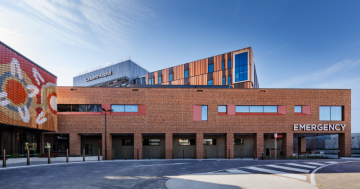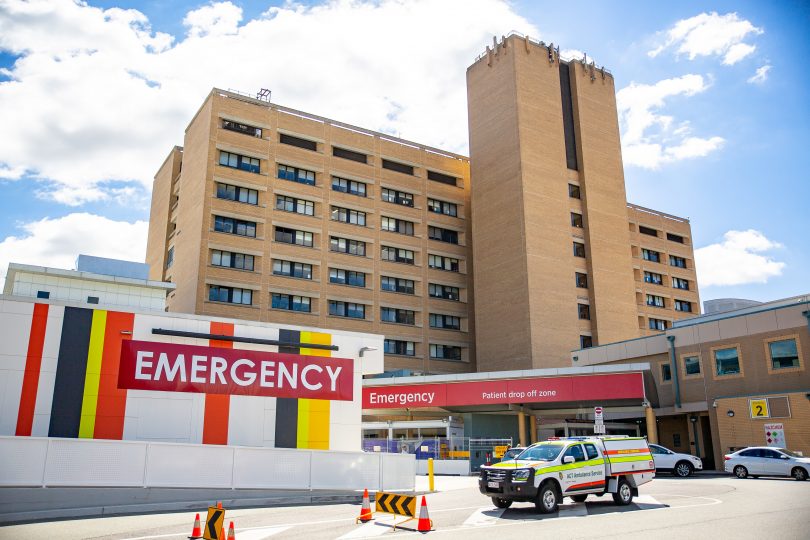
Canberra Hospital Emergency Department entry. The ACT’s ED waits are the worst in the country. Photo: File.
ACT public hospitals are among the worst-performing in the country despite boasting some of the highest staff and bed numbers, according to the latest Report on Government Services from the Productivity Commission.
In 2020-21, they had the lowest percentage of emergency department (ED) patients treated on time at 48 per cent, with Tasmania next at 58 per cent. NSW led the pack at 79 per cent.
The ACT has been stuck on about that percentage since 2016-17 when its hospital EDs saw 62 per cent of patients on time.
Those who spent four hours or less in the ED came to 57 per cent of presentations, again the lowest in the country, and roughly the same as the year before, but it represents a marked deterioration since 2016-17 when the figure was 73 per cent.
But ACT ED presentations have increased since then by about 10,000 to 153,713. The number of presentations had been steadily increasing before a dip to 141,020 in 2019-20.
The ACT spent $3835 per person in 2019-20, second only to the Northern Territory with $6071 due to its small population. The ACT also has the second-highest number of beds per 1000 people at 2.7, steady for the two years previously, behind Tasmania with 2.8.
Treating people in ACT hospitals remains comparatively expensive.
The average cost of treatment in ACT hospitals in 2019-20 was $6070, second to Tasmania ($6434) and higher than SA ($5955). This was an increase on the three previous years but less than the 2015-26 figure of $6257.
The average cost of a non-admitted ED presentation was $620, while the figure for admitted cases was $1640, second only to Tasmania ($1840). The cost had been steadily rising over the previous four years.
Average staff numbers remain among the highest in the country, second only to the NT.
The average number of full-time equivalent (FTE) salaried medical officers in 2019-20 was 2.6 per 1000 people, up from 2.4 for the three years previously, while for nurses it was 8.1, up from 7.9 the year before and 7.6 in 2015-16.
Canberra Health Services has embarked on a recruitment drive for doctors and nurses to meet increasing demand.
Despite the ACT’s growing population, recurrent spending on public hospitals has hardly moved since 2015-16.
In 2019-20 the ACT spent $1.653 billion, up from $1.546 billion the previous year, down on the 2017-18 figure of $1.648 billion.
It was $1.632 billion in 2016-17 and $1.623 billion in 2015-16, when the last jump in spending saw health allocations increase from $1.225 billion in 2014-15.
The government has come under fire for underspending on the health system, but it has committed more than half a billion dollars on the Canberra Hospital expansion, including the new ED and Critical Services Building.
Suspension of elective surgery during the pandemic has made it difficult to interpret and compare performance in that area, but it has meant the waiting list has grown.
When the latest quarterly reviews for 2020-21 were released last December, Health Minister Rachel Stephen-Smith said Calvary Hospital and Canberra Hospital continued to implement changes to improve emergency department patient flow, including direct admissions into wards and rapid assessment by senior clinicians.
But she conceded there was still more to do.
She said the 2021-22 ACT Budget was delivering significant investments in new infrastructure and more doctors, nurses, allied health care workers and support staff to boost capacity across our hospitals and community-based services.
This includes $23 million for Canberra Hospital’s emergency department and a further $39 million to boost emergency surgery capacity.












